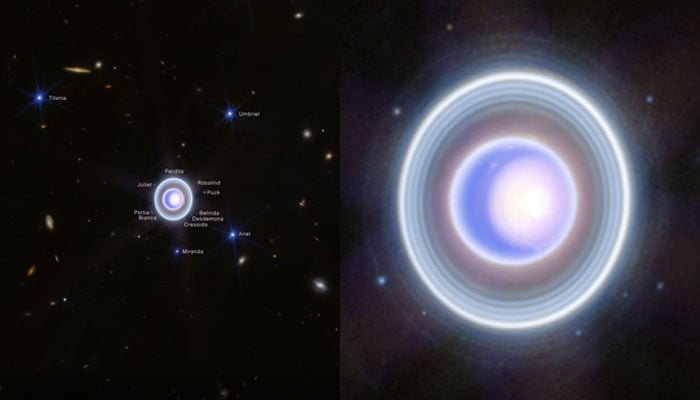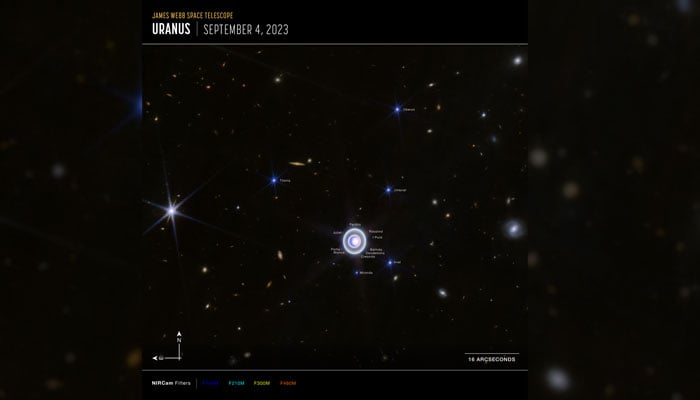NASA's JWST captures stunning photos of Uranus, showing its rings, moons
NASA's JWST's latest images provide enhanced wavelength coverage for a more intricate portrayal
December 19, 2023

NASA's James Webb Space Telescope (JWST) has turned its gaze towards the peculiar and mysterious ice giant, Uranus.
The recent imagery showcases the dynamic world complete with rings, moons, storms, and intriguing atmospheric features, including a seasonal polar cap. Building upon a two-colour version disclosed earlier this year, the latest images provide enhanced wavelength coverage for a more intricate portrayal.
Webb's remarkable sensitivity enabled the capture of Uranus' faint inner and outer rings, encompassing the elusive Zeta ring—an exceptionally faint and diffuse ring closest to the planet.

Additionally, the telescope successfully imaged several of the planet's 27 known moons, revealing even some small moons nestled within the rings.
Contrasting with the serene, solid blue ball appearance in visible wavelengths observed by Voyager 2 in the 1980s, Webb's infrared view exposes Uranus as a peculiar and dynamic ice world, teeming with captivating atmospheric phenomena.
A standout feature in the imagery is Uranus' seasonal north polar cloud cap. Notable details, such as the bright, white inner cap and the dark lane at the bottom of the polar cap towards the lower latitudes, are now more discernible compared to Webb's earlier images this year.
Bright storms are also visible near and below the southern border of the polar cap, suggesting a potential interplay of seasonal and meteorological effects on their occurrence.
As Uranus tilts at an extreme 98-degree angle, experiencing the most extreme seasons in the solar system, Webb's unparalleled infrared resolution and sensitivity become crucial.
The telescope offers groundbreaking clarity, aiding astronomers in unravelling the complexities of Uranus' atmosphere and deciphering the seasonal and meteorological influences on its storms.
Moreover, beyond its significance in understanding our solar system, Uranus serves as a valuable proxy for studying the multitude of similarly sized exoplanets discovered in recent decades.
Webb's detailed observations, particularly of the elusive Zeta ring, provide invaluable insights for planning future missions to Uranus and enhance our understanding of exoplanetary systems.
The James Webb Space Telescope stands as the world's premier space science observatory, unravelling mysteries within our solar system and exploring distant worlds around other stars.
As an international collaboration led by NASA with partners ESA (European Space Agency) and the Canadian Space Agency, Webb continues to contribute to our comprehension of the universe and our place in it.









